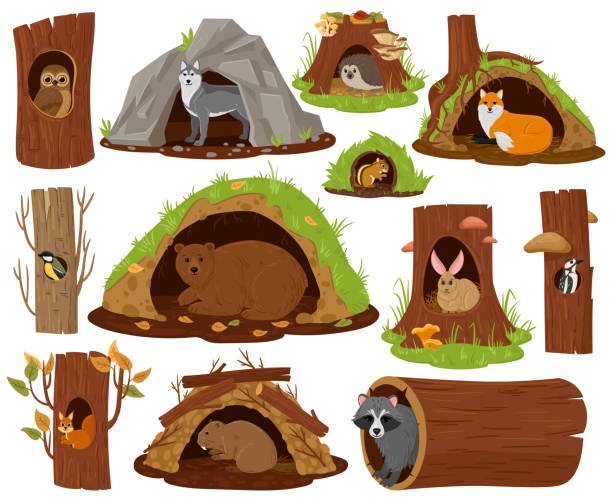Hibernation is a state of decreased metabolic activity and reduced body temperature in which an animal enters during winter or during a period of food shortage. It is a survival strategy that allows animals to conserve energy by slowing down their metabolism and reducing their need for food. During hibernation, animals enter a state of deep sleep, and their heart rate, breathing, and body temperature all decrease. This allows animals to survive in harsh environments where food is scarce and temperatures are low. It’s important to note that not all animals hibernate, some animals such as birds and reptiles use migration or aestivation, respectively, as a survival strategy. Examples of animals that hibernate include:
- Bears: Black bears, Grizzly bears and Polar bears enter into hibernation during winter to conserve energy and avoid harsh weather conditions.
- Rodents: Chipmunks, ground squirrels, and prairie dogs hibernate during the winter to conserve energy and avoid the cold.
- Bats: Some species of bats hibernate during the winter to conserve energy and avoid the cold.
- Amphibians: Some species of frogs and toads hibernate during the winter to survive low temperatures and food scarcity.
- Insects: some species of insects such as monarch butterflies also go into hibernation during winter.
There are a few important details to be aware of when it comes to hibernation:
- Hibernation is not the same as sleep: While hibernation is often referred to as “deep sleep,” it is not the same as the sleep that humans and other animals experience. During hibernation, an animal’s metabolic rate and body temperature decrease significantly, and their heart rate and breathing slow down.
- Not all animals hibernate: Not all animals have the ability to hibernate. Some animals, such as birds, migrate to warmer climates during the winter, while others, such as reptiles, use aestivation, a state of dormancy during hot and dry seasons.
- Hibernation is triggered by environmental cues: Hibernation is usually triggered by environmental cues such as a decrease in temperature and a decrease in daylight. Some animals, such as bears, hibernate for several months during the winter, while others, such as ground squirrels, hibernate for shorter periods of time.
- Hibernation is a survival strategy: Hibernation is a survival strategy that allows animals to conserve energy and avoid harsh conditions. During hibernation, animals enter a state of deep sleep, and their heart rate, breathing, and body temperature all decrease. This allows animals to survive in environments where food is scarce and temperatures are low.
- Hibernation can be interrupted: Hibernation is not always a continuous state, some animals can be awakened from hibernation by environmental changes or disturbances. However, interruptions can be stressful for the animal and can use up stored energy reserves.
- Different stages of hibernation: Some animals have different stages of hibernation, for example, bears enter into light hibernation and deep hibernation. Light hibernation is a state of decreased activity, where body temperature and metabolism are slightly lowered, but the animal can still be awakened relatively easily. Deep hibernation is a state of deep sleep, where body temperature and metabolism are greatly lowered and the animal is difficult to awaken.
- Hibernation and energy consumption: Hibernation allows animals to conserve energy and survive during periods of food scarcity, but it also has its cost. Some animals may lose a significant amount of body mass during hibernation, which can lead to difficulties in reproducing or foraging for food once they emerge from hibernation.
It’s important to be aware that hibernation varies widely among animals and even within a species, some animals may hibernate longer or shorter than others, and different stages of hibernation may have different metabolic rates and different body temperatures.
Are you ready to pitch your content on the Indian Blog? Submit your guest post here.

